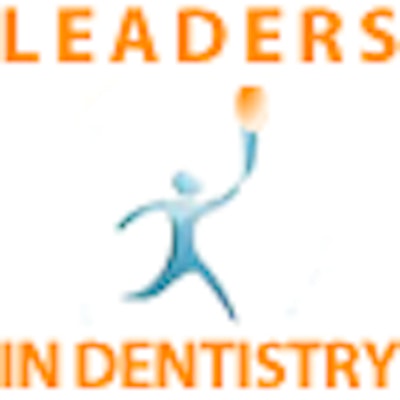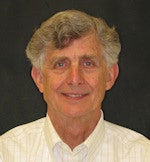
DrBicuspid.com is pleased to present the latest installment of Leaders in Dentistry, a series of interviews with researchers, practitioners, and opinion leaders who are influencing the practice of dentistry.
We spoke with Stuart White, DDS, PhD, former chair of the oral radiology department at the University of California, Los Angeles School of Dentistry and a pioneer in the development of selection criteria for dental radiography. He shared his thoughts on growing concerns about radiation exposure from diagnostic imaging and what dental practitioners can do to ensure patient safety.
DrBicuspid: Concerns over radiation exposure have come to the forefront in recent months following a series of articles in the New York Times that included an "exposé" on dental cone-beam CT. With the trend toward digital and 3D imaging, are dental patients at greater risk of overexposure these days?
 Stuart White, DDS, PhD
Stuart White, DDS, PhD
Dr. White: Dental radiographs, including cone-beam CT, can provide valuable information critical to diagnosis and treatment and are essential to dentistry. Refusing a radiographic-indicated examination may carry far greater risks than from the exposure. However, even the smallest exposure potentially carries risk.
Consequently, it is important to reduce any unnecessary exposure. Broadly, there are two methods to accomplish this end:
- Only make a radiographic exposure when there is a reasonable likelihood that it will provide clinically useful information.
- Use dose-sparing techniques when a decision is made to make a radiograph.
Clearly the use of a radiographic exposure to gather information that could be obtained by other means and without exposing a patient is to be avoided. With general adoption of these principles, the average patient exposure would decrease.
There has been discussion about the potential relationship between dental radiographs and thyroid cancer, and we are seeing a surge of interest in thyroid collars, especially for children. What are the best ways to protect patients and staff members from radiation exposure?
Unlike in medicine, children are more likely to be exposed to radiation by dentists, so the need to minimize their exposure is great. There is a wide variety of data showing that children are more sensitive to radiation than adults, and the thyroid gland of children is especially sensitive. Accordingly, the use of thyroid collars for children under 20 is recommended, in addition to the steps outlined below.
The best means to reduce exposure to patients when making radiographs are the following:
Use F-speed film (such as Insight) or digital imaging for intraoral radiography. The slower D-speed film (such as Ultra-speed film) requires at more than twice as much radiation and the resulting images are not more diagnostic.
Use rectangular collimation to support the film. These devices further reduce patient exposure to less than half that received by conventional round collimation.
Only make radiographs when there is a reasonable probability they will yield clinically useful information.
The best means to reduce exposure to staff members are listed below:
- Use the techniques above to reduce patient exposure, thereby reducing scattered radiation to the staff.
- Stand behind a wall or barrier with a leaded glass window when making radiographs.
- If a protective barrier is not available, then stand at least 6 feet from the x-ray machine and out of the primary path of the beam.
- Never hold the x-ray machine or film during the exposure.
Another hotly debated issue right now in oral and maxillofacial radiology is when, and when not, to take an x-ray or 3D image. What guiding principles should dental practitioners use to determine whether an image is warranted?
The guiding principle of radiation protection is ALARA: All exposures should be as low as reasonably achievable.
The first step is justification, determining by a history and clinical examination that a radiographic examination is indicated and that there is a reasonable likelihood that it will produce information useful for clinical care. In 2006, the ADA reaffirmed a set of guidelines for when dental radiographs are indicated. Since all patients are different, dentists should not prescribe routine dental radiographs at preset intervals for all patients. Rather, dentists should recognize the individual circumstances of each patient and customize their radiographic examinations to address their patients' individual needs.
The second step is optimization, using fast receptors (F-speed film or digital sensors), rectangular collimation, and selection of low-dose techniques. For instance, the dose from a panoramic machine is much lower than that of a large-volume cone-beam CT examination, so a panoramic examination is preferable in most circumstances when an overview examination is needed with a new patient.
These same issues are coming up with regard to cone-beam CT. Are some practitioners overutilizing this technology? Does there need to be more education to help dentists determine when 3D imaging is warranted and when it is not?
Cone-beam CT is an emerging technology that offers great diagnostic values, but in some cases it is being overused. It is clearly of great value for evaluating the jaws when considering placing implants or for evaluating the temporomandibular joints for evidence of osteoarthritis. Small-volume, high-detail cone-beam CT can also be of great value for investigating dental conditions such as internal or external resorption, fracture, or periapical disease. And in the orthodontic literature, there is evidence of its utility in a wide variety of situations.
However, there is a paucity of evidence that cone-beam CT examinations improve clinical outcomes for orthodontic patients. Since these patients tend to be young, orthodontists should be especially cautious and only obtain cone-beam CT examinations when there is clear clinical indication that these examinations will yield clinically relevant information not available on the much lower dose panoramic and cephalometric examinations that have been used for many decades.
Various professional organizations are preparing guidelines to assist dentists in identifying patients most likely to benefit from cone-beam CT examinations. Such guidelines will be published in the professional literature as they become available.
Should cone-beam CT be used only in certain specialties? And only on certain patients (not children)?
Cone-beam CT examinations should be used whenever there is clinical indication that the examination may provide clinically useful information not achievable by a lower-dose examination. Such situations may arise in patients of any age being seen by any dentist.
If a dental practitioner is considering buying a cone-beam CT system, what are the key criteria they should keep in mind?
Cone-beam CT machines are most appropriate in offices where a large proportion of the care provided calls for cone-beam CT examinations, such as oral surgeons or periodontists who place many implants. When such dentists purchase a cone-beam CT, they should consider machines that have the capability of limiting the field size so the dentist can tailor the examination to the anatomic region to be examined. Further, some machines provide lower doses than other, even for the same exposure volume. Dentists considering purchase of a machine should look into this carefully.
For dentists who have only an infrequent need for cone-beam CT examinations, it would be more appropriate for them to refer their patients to a dental school or dental radiology laboratory for the examination. In these facilities, there will be dental radiologists who will prepare formal radiographic reports of the examination. Dental radiologists will systematically go through the entire imaged volume in the axial, coronal, and sagittal planes looking for abnormalities in addition to examining the regions relevant to the exposure being made. This is a time-consuming procedure, and most dentists do not have the training or experience to do this competently.
Are there things cone-beam CT system manufacturers can do to further reduce radiation exposure?
There are many things the manufacturers of cone-beam CT systems can -- and should -- do to reduce radiation exposure. The current machines on the market have wide variations in doses delivered to patients, even accounting for variations in the size of the field-of-view. All machines with medium or large fields-of-view should provide a means of collimating the beam to a smaller volume. All machines should have means for reducing mA or number of basis images for examinations not requiring high detail. All machines should be provided with dose-area-product (DAP) meters and ionization chambers that measure patient exposure. The presence of such devices would inspire both dentists and manufacturers to be more interested in reducing patient exposure.



















